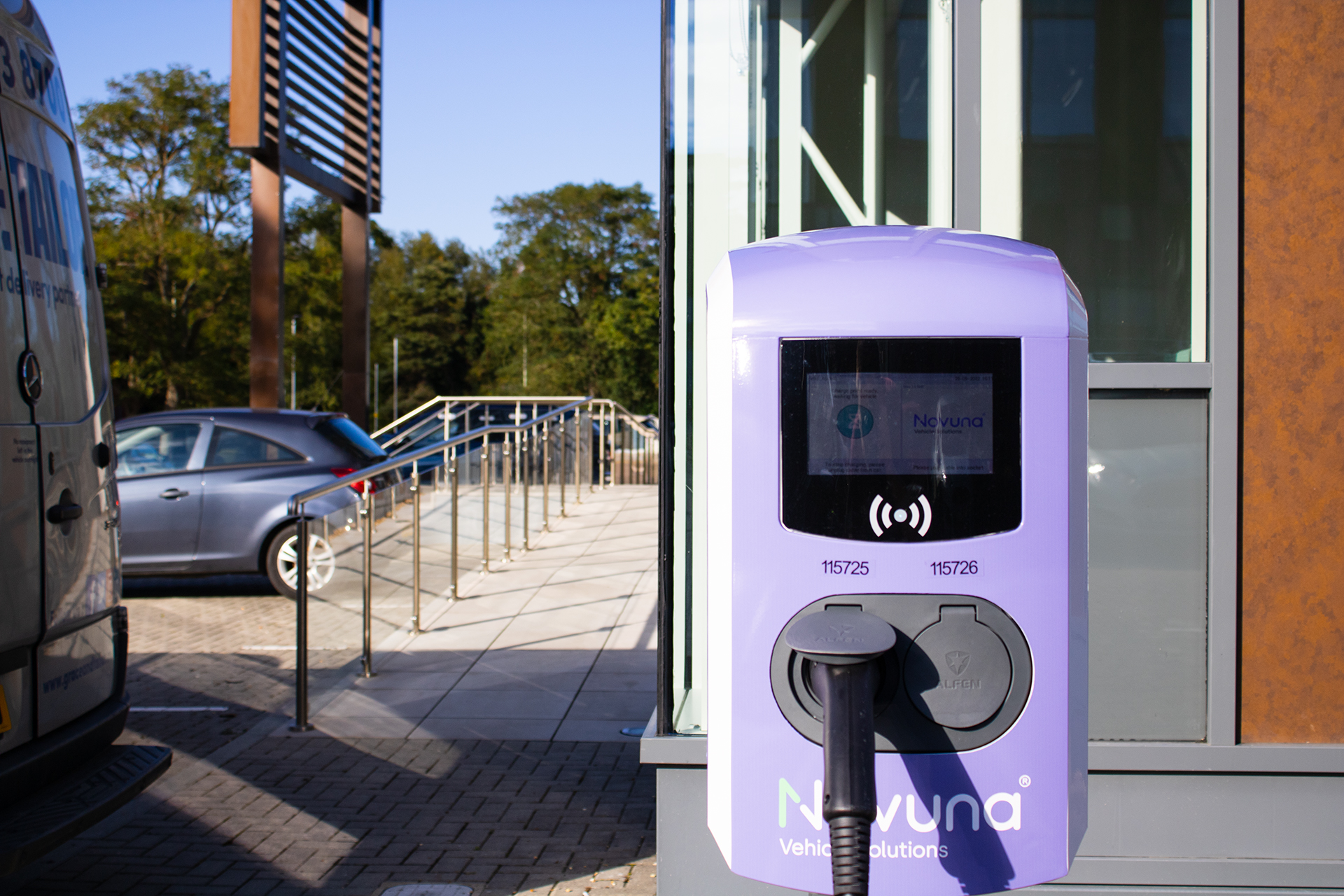Electric Vans: Are You Ready to Make the Switch?
Monday 20th May 2024
Last updated: 4th February 2025

In many ways, the government’s decarbonisation strategy has treated cars and vans as broadly the same. However, progress towards the 2035 ban on new ICE (internal combustion engine) vehicle sales has been markedly different.
While the majority of new company cars come with a plug, just over 5% of new van registrations are electric. To understand the reasons for this, it’s worth noting that an independent survey of UK van fleet operators highlights that 37% of businesses are concerned about range, over 40% are put off by charging difficulties, and a massive 54% feel the purchase price is too high.
On the other hand, 22% of van fleet operators are planning to add electric vehicles to their fleet within the next 12 months. This would indicate that there is a willingness to change if manufacturers can deliver a fit for purpose product at a commercially viable price point. It’s a challenge that manufacturers will undoubtedly solve; the big question is: when?
The government’s ZEV mandate stipulates that at least 10% of vans sold in 2024 must produce zero emissions. Failing to do so will result in heavy fines of £9,000 this year, with more punitive measures and higher targets coming into force from 2025.
Taking all of this into consideration, it makes sense to look at the challenges involved and explore how this might affect your own decision on when and how to make the switch.

Do electric vans have a far enough range?
Range anxiety is one of the longest-running debates, and although the average range of a new electric car is just under 300 miles, vans have been lagging some way behind — until now.
Admittedly, there is still room for improvement and the options are fairly limited, but longer-range models are finally starting to appear in most lower-weight categories. It’s also worth remembering that over half of van drivers travel just 15 miles from their base on a typical day.
Long-range electric vans Up to
Volkswagen ID. Buzz Cargo: 254 miles
Vauxhall Vivaro Electric: 205 miles
Peugeot e-Expert: 205 miles
Ford E-Transit: 196 miles
Renault Kangoo E-Tech: 186 miles
Many van fleet operators will be quick to point out that official ranges and real-world experience are two different things.
Of particular importance to van drivers is the fact that travelling with a full load can reduce the available range by 14–30%, possibly more. However, we do need to make the distinction between ‘full’ and ‘full payload’.
Driving style also makes a big difference. So much so that a new world record was set last year when an unmodified Fiat E-Scudo van, which has a very respectable range of 197 miles, was driven in a circular route across Cambridgeshire, Lincolnshire and Northamptonshire for 311 miles. This is an extreme example, but it illustrates the point that a change in driving style can radically alter the available range.

How long does it take to charge an electric van?
The higher ranges seen on new electric vans are important because, just as with cars, there are still some very valid concerns about the scale and regional spread of the UK’s public charging infrastructure.
As things stand, there are c.60,000 public charge points available around the UK and over 16,000 new units were added in 2023 alone. This is definitely good news but, as things stand, less than 20% of chargers provide the rapid or ultra-rapid charging needed by business-critical vehicles.
Thus far, this has been a moot point because so few electric vans have been able to charge at higher speeds, but this is no longer the case and models such as Ford’s E-Transit can gain 64 miles in just 30 minutes using a 50kW charger. It might not sound that much, but it can often be sufficient to last until the end of the day.
Even so, it’s clear that ‘out of hours’ charging is a vital part of the electric van solution and a report for the Climate Change Committee recommends that policymakers need to encourage fleet operators to concentrate on overnight charging at depots instead of trying to shift the focus to using charge points installed at drivers’ homes. This makes a lot of sense, especially when we consider that 40% of van drivers are either unable or unwilling to charge at home.
The government supports this approach with a Workplace Charging Scheme that offers qualifying businesses a grant of up to 75% of the cost of purchasing and installing up to 40 sockets at a single or multiple sites (up to a maximum of £350 per socket). However, the scheme is currently due to finish at the end of March 2025 and, while this might sound a long way off, it’s worth checking the eligibility criteria and application process as soon as possible.
Not all van operators will have a site that can support the required number of chargers, and many will have operational models that make depot charging impractical. In such cases, it makes sense to engage with drivers who are capable of having a charge point installed at home, consult local authorities about their plans, and talk to local businesses who have, or would be willing to install, charge points for use by employees during the day, which could then be shared overnight.

Why are electric vans so expensive?
With only around half of fleets using Total Cost of Ownership (TCO) as a means of comparing vehicle acquisition costs, increased focus falls on the price differential between comparable diesel and electric models. Worryingly, this can range from 20% to as much as 50% or more.
Getting the figures together and calculating TCO involves looking at available subsidies, such as the plug-in van grant of up to £2,500 for small vans and £5,000 for large vans, fuel and energy prices, operational needs, and a range of different finance models. It’s certainly not quick to do, but it could make a real difference to the decisions made and the true cost of running your fleet as a whole.
Looking forward, the recently implemented ZEV mandate, which sets targets for the percentage of electric vehicles sold by each manufacturer, may also have a bearing on the price of new electric vans. The target starts at just 10% in 2024 but increases each year until 2030, before leaping to 100% in 2035.
|
ZEV Mandate: Annual Van Targets |
|
|
2024 = |
10% |
|
2025 = |
16% |
|
2026 = |
24% |
|
2027 = |
34% |
|
2028 = |
46% |
|
2029 = |
58% |
|
2030 = |
70% |
|
2035 = |
100% |
Failing to meet these targets could result in a fine of £18,000 for every non-compliant vehicle sold above the allowed limit.
Given current sales volumes, the government has decided to ease the burden somewhat by halving fines for 2024 to £9,000 per vehicle. There is also the option to buy credits from manufacturers who have exceeded their target and to bank and borrow between years but, whichever way you look at it, failing to hit EV sales targets could work out to be very expensive.
As a result, manufacturers are faced with a dilemma. Do they discount new electric vans to hit the required numbers, or increase the cost of ICE vehicles to reduce the differential? Fleet operators may well hope for the former, but the overall economics could mean higher prices across the board.

Is Hydrogen a better solution for small vans?
Concerns over battery weight, realistic range, and charge times have led many to favour hydrogen as a long-term solution for HGVs; however, when it comes to lower-weight vans — 4.25t or less — the need for an alternative is far less clear.
On the face it, hydrogen vans have a lot to offer. For example, the Vauxhall Vivaro (Hydrogen) has a range of 249 miles, a payload of up to 1,000kg, and can be refuelled in just 3 minutes. Not bad, if only there was somewhere to fill it up.
Back in 2021, there were just 15 hydrogen fuel stations but, since then, the lack of demand has led to closures and just 5 remain. With so few hydrogen vehicles on the road, making the case for sustained investment without extensive government support is not exactly an easy sell.
Of course, you could look at setting up hydrogen supply partnerships or building private refuelling stations at conveniently located depots but, for most van operators, this simply isn’t viable.
We should also remember that while hydrogen vans offer longer ranges and quicker refuelling times right now, battery technology is still developing and the situation could easily be reversed in the future.

Do electric vans have a weight problem?
The additional weight of an electric battery causes a particular problem for vehicles at the upper end of the Light Commercial Vehicle (LCV) classification.
Since 2018, standard licence holders have been able to drive 4.25t alternative-fuel vans, and the vehicles themselves, despite being over the upper limit of an LCV, are exempt from most O licence rules.
However, the Driver and Vehicle Standards Agency (DVSA) and the Department for Transport (DfT) have said that rules around annual MOT tests (from new), the need for speed limiters and, in some cases, the use of tachographs, are still relevant.
The DfT ran a call for evidence last year and some legislative changes have already been made, such as the removal of HGV-specific training and adjustments to towing allowances for vehicles up to 4.25t. This shows we are heading in the right direction, but there is more work to be done.

Should I make the switch?
Electric vans are clearly a ‘work in progress'. New models will continue to arrive which offer longer ranges and quicker charging times. Increased choice and competition for orders is likely to push prices down, and legislation will undoubtedly be adjusted to remove some, or all, of the remaining barriers.
Deciding whether it’s the right time for your business to start making the switch depends on a careful examination of the operational viability of electric vans and the true total cost of ownership. In fairness, this is easier said than done and so, if you need a little help assessing your options, just get in touch with one of our electric van experts today.

